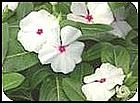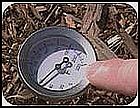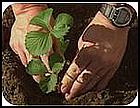So when do you start planting flowers, trees and vegetables? Well, the more experienced you become as a gardener, the easier this question becomes to answer. But even despite careful planning and years of experience, you’ll still lose crops occasionally because of a late spring or early fall freeze. After all, Mother Nature is far from predictable. The bottom line is planting dates are determined not so much by specific calendar dates or even seasons, but by current weather conditions.

Annuals should be planted in spring, when daytime temperatures are consistently in the 70s. (Don’t always assume that because annuals are available at your local nursery they’re ready to go in the ground.)

Spring-flowering bulbs such as tulips and daffodils must be planted in the fall, no matter where you live.

Soil temperature is your most accurate guide for when to plant vegetables. Local forecasters often include soil temperatures in their weather reports, or you can buy an inexpensive soil thermometer and take the readings at a depth of four inches.

Check with local sources for the best times to lay sod, and get a guarantee if you can.

When setting out transplants of various vegetables, know whether the plants are cool-season or warm-season varieties.
Here’s some key information to help you get the hang of it.
Trees and shrubs
Conventional wisdom says that both trees and shrubs can be planted whenever the ground can be worked, which in many parts of the country is year-round. But if winters are severe in your region, you should plant trees and shrubs during the spring or a few weeks after the snow melts and temperatures are likely to remain above freezing. If you live in an area where winters are mild or summers are hot and dry, then fall planting may be your best bet. The best way to determine the ideal planting dates for trees and shrubs in your area is to consult your local nursery or home-and-garden center.
Spring-flowering bulbs
Fall is always the proper time to plant spring-flowering bulbs, this is a good guide to follow:
In the north — Zones 2 and 3 — plant in September;
in Zones 4 and 5, October;
in Zones 6 and 7, November;
and in Zone 8, December.
In climates warmer than Zone 8, you’ll probably have to pre-cool spring-flowering bulbs in the refrigerator if you expect them to bloom.
Perennials
Certain perennials, including wildflowers, can be planted in the fall in many parts of the country, but virtually all of them can be planted in the spring. Just wait until the danger of frost has passed.
Turf grasses
Among turf grasses, there are cool- and warm-season varieties. If grown from seed, cool-season grasses such as fescue and rye should be planted in early spring–from March to May–or during September or October. Warm-season grasses such as Bermuda and Zoysia germinate best when temperatures are in the 70- to 80-degree range, which is between May and July in most parts of the country.
Vegetables
If you look at a planting guide for vegetables, you’ll find that spring vegetables should be planted in late winter, summer vegetables in early spring, and fall vegetables in mid to late summer. Once soil temperatures are consistently in the 50-degree range, you can safely plant most spring vegetable seeds. A few weeks later, when soil temperatures are in the upper 60s to 70s, you can plant your summer crops. Adding to the confusion are the terms “cool-season” and “warm-season” vegetables. These terms relate not so much to the time of year a certain vegetable should be planted, but rather to the type of temperature it prefers or requires for optimum growth. Cool-season vegetables–including most salad greens, peas, onions and cole crops such as cabbage, cauliflower and broccoli– can tolerate temperatures slightly below freezing. Their warm-season counterparts– tomatoes, peppers, eggplant, squash and melons–may die if air temperatures drop below 50, unless you’ve protected the transplants with a cloche or some other plant-protection device.
A Few Final Thoughts
Check with local sources for more accurate information regarding planting dates, and remember that local climates may vary considerably from year to year, so don’t rely exclusively on calendar dates. If all else fails, watch for certain fairly reliable clues from nature. For example, you can safely plant corn once oak leaves are the size of a squirrel’s ear. Potatoes can go in the ground about the time forsythia is in bloom, and practically anything can be planted about the time kids start playing in the sprinkler.
